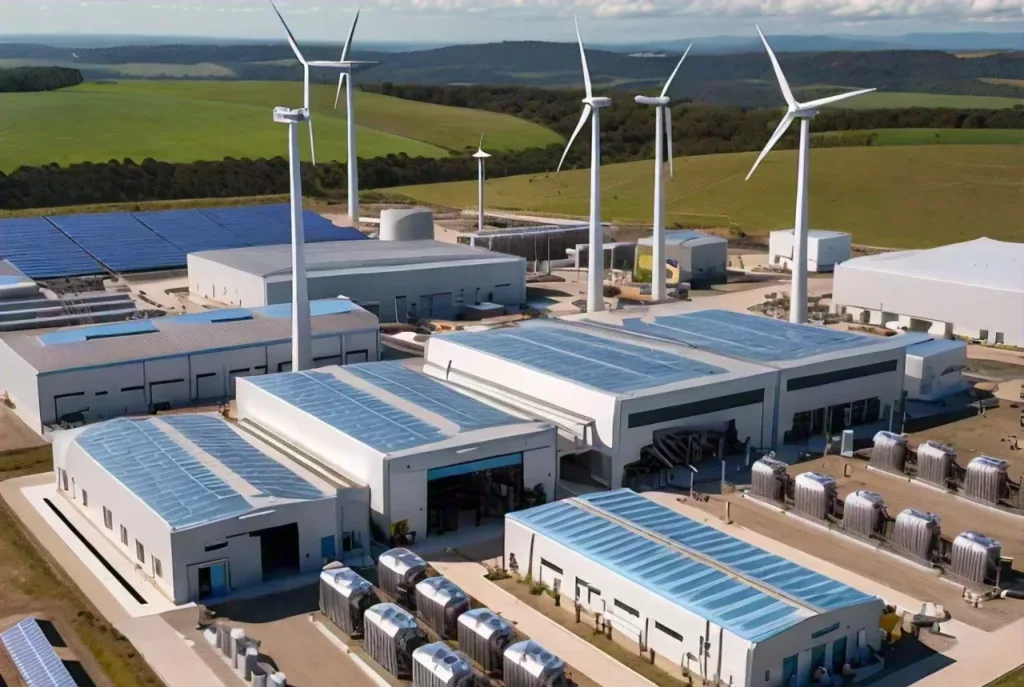Renewable energy has long been touted as the key to a sustainable future. Now that wind and solar fuel everything from cars to power plants, these are increasingly cleaner alternatives to fossil fuel. A very significant challenge remains, though: how do we store energy when the wind isn’t blowing, or the sun isn’t shining? A major breakthrough from Columbia Engineering can change that-for good. Columbia engineers make a groundbreaking breakthrough in revolutionary battery technology. It should add much-needed stability and reliability for renewable energy. The solution? A new, more powerful “fuel” in the form of advanced electrolyte that not only lasts longer but also is much cheaper to produce.
The Challenge of Renewable Energy Storage
Wind and solar energy are excellent sources of renewable power, but they come with a critical issue—intermittency. These sources do not produce electricity consistently; thus, energy storage solutions are crucial to ensure that power is available when nature is not cooperating. Inability to have effective and affordable storage solutions has been one of the major bottlenecks in harnessing renewable energy to their full capacity.
Addressing this issue, Columbia material scientists have started focusing on new light innovation-one for super advanced batteries, which could revolutionize the way energy stored in renewables. In a recently published paper in Nature Communications, they discuss a new battery technology for K-Na/S batteries, which will contain potassium (K), sodium (Na), and sulfur (S). The elements are low in cost and easily available.
Columbia has thus found research interest in efficiency as well as bringing down the cost of energy storage. According to Associate Professor Yuan Yang, lead researcher from Columbia Engineering: “The key to it all is that we must extend the operation life of a battery and make them easy to produce at low cost. It will make renewable energies more reliable, stabilize grids, and reduce our reliance on fossil fuels toward a sustainable future.”.
The developed team has also designed a novel electrolyte using acetamide and ε-caprolactam, which when used in K-Na/S batteries, gives better efficiency. The New Electrolyte – this electrolyte dissolves inactive solid compounds – K2S2, K2S – whose inactivity was otherwise limiting the otherwise high capacity of the battery to achieve higher energy and power density. In addition, this revolutionary electrolyte facilitates battery operation at around a much lower temperature, up to about 75°C with oven temperatures not feasible without exceeding 250°C.
Learn More About Columbia Engineering Research here at Columbia Engineering
Overcoming Past Limitations: Enhancing Battery Performance
K-Na/S batteries have been hindered by two major past limitations. The first is that the synthesis of solid phases, such as K2S2 and K2S, prevented diffusion, which in turn reduced capacity. The second limitation was the high operating temperatures (all greater than 250°C) required to drive these batteries, which resulted in a high-cost system due to complex thermal management systems.
However, electrolytes developed by Yang’s group overcome the latter two problems. Dissolution of the appropriate solid compounds makes a battery store and release energy far more efficiently while operating at some 75°C rather than 125°C. The result is therefore a battery which attains nearly theoretical discharge capacities and extended cycle life.
PhD student and co-first author Zhenghao Yang commented: “Our approach reaches practically close-to-theoretical discharge capacities and cycle life. This is very exciting within the scope of intermediate-temperature K/S batteries.”
Scaling Up for a Sustainable Future
Currently, the design team is optimizing small, coin-sized battery prototypes and eventually scaling the same technology up to larger energy storage applications that would be one of the stable and reliable power supplies from renewable sources even during low sun and low wind.
Advanced versions of these batteries could transform the global energy landscape if implemented, stabilizing energy grids and reducing dependence on fossil fuels.
Learn More About Electrochemical Energy Storage
The Columbia Electrochemical Energy Center (CEEC): Pioneer in Sustainable Technology
Yang group-led research is part of a greater effort being made at Columbia’s Electrochemical Energy Center, a cross-functional platform for researchers from widely diverse disciplines to work collaboratively in developing novel electrochemical energy storage and conversion technologies. The CEEC is achieving this through industry collaborations with the intent of transitioning such groundbreaking solutions from the realm of laboratory research into real-world applications.
The promising pathway towards a brighter future and sustainability is the innovative development of the latest battery. Where renewable energy sources are fast becoming necessary, means of storage such as this will become ever important so as not to disrupt power supply.
The Future Road: Optimizing and Scaling Battery Technology
The potential of these new batteries is tremendous but not yet fully realized. Researchers at Columbia are optimizing the electrolyte composition to get even better performance. The technology, once fully developed, could revolutionize the way we will store renewable energy at a large scale.
The next decade promises to be transformative in the quest for renewable energy transition globally. Such solutions as K-Na/S batteries will stand at the mainstay towards reliable and affordable storage in this all-out effort to fully tap into the Sun and the Wind in ushering an era that is both sustainable and resilient.
Bottom Line:
Columbia Engineers Develop More Powerful, Cost-Effective Electrolyte for K-Na/S Batteries.
- It will solve the biggest challenge of renewable energy: reliable, long-term storage.
- The breakthrough promises to make renewable energy more reliable and increase our prospects for independence from fossil fuels.
Conclusion: Building the Future of Renewable Energy
As renewable energy gains more prominence in the fight against climate change, developing innovations like Columbia Engineering’s input on battery technology matters even more. They are giant steps in making energy storage more efficient, affordable, and scalable as part of a transition toward a greener and more sustainable future.
For More Updates: Emerging Technologies



